“Wolf” was Canadian Forces Major Paeta Hess-von Kruedener.
On July 25th, 2006 the 44-year-old Canadian soldier and three other peacekeepers from Austria, China, and Finland, were in an underground bunker as bombs and shells rained down on their UN observer post screaming into cell phones and military radios to call off the attack amidst the noise, shock waves, dust, debris and shrapnel flying all around above them.
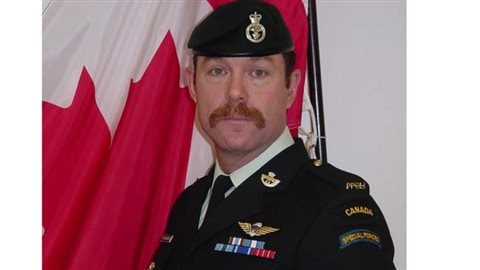
In peacekeeping terms, the mission was called UNIFIL-the United Nations Interim Force in Lebanon. It was created by Security Council Resolution 425 and 426 on 19 March 1978. Its purpose was to confirm Israeli withdrawal from Lebanon, to restore international peace and security, and to help the Lebanese Government restore effective authority in the area.
It was a sub-mission of the oldest peacekeeping mission on the UN books, UNTSO the UN Truce Supervision Organization, established in 1948 which was created to observe the truce between Israel and its neighbours, Syria, Lebanon, Jordan and Egypt, a truce in name only, repeatedly and violently violated by all parties ever since.
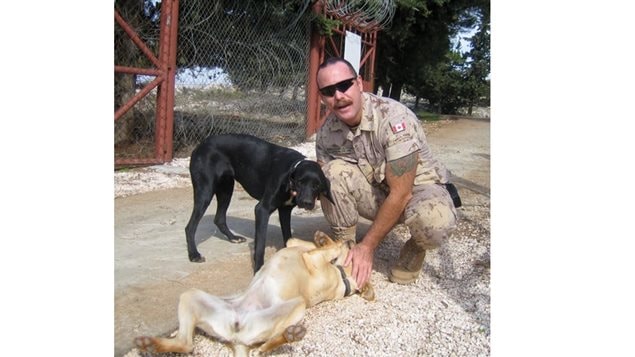
A couple of weeks earlier, early in morning of July 12, Israeli forces detected that someone had contact with the fence along the border with Lebanon where Hezbollah was active. Israeli forces code for this was a “red touch”. The local commander feared Hezbollah was planning to abduct Isreali soldiers, and they had a codeword for that too, “Hannibal”.
A little later, two Israeli patrol vehicles rolled slowly toward the point of the “red touch”. But Hezbollah was waiting, hiding in the bushes they opened up at close range with machine guns and anti-tank rockets. Of the seven Israelis, three were killed outright, two wounded, and two taken hostage, (although it was later learned that the two were already dead, and that Hezbollah had taken their bodies)
Israeli forces immediately sent reinforcements, but Hezbollah terrorists had already snuck back into Lebanon. The Israeli patrol leader called into the radio, “Hannibal! Hannibal!”, the call for full-force retaliation. Within two hours, Israel had sent tanks across the border.
At the time, Wolf and another peacekeeper from Ireland, Pat Dillon were on patrol in a jeep when a call was sent to all UN patrols to head immediately to the nearest patrol base, in this case to Patrol Base Khiam.
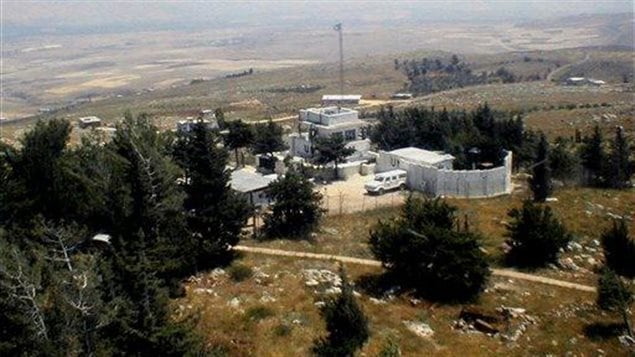
At Base Khiam, the group soon saw Israeli fighters attacking all suspected Hezbollah locations, including some buildings and bunkers at the edge of the village of El Khiam, only about 75 metres from the UN base. The blasts frighteningly close
The peacekeepers immediately called the UN duty officer to contact the Israelis to tell them they were bombing too close.
The UN defines close as a 500kg bomb within one kilometer of a base. In this case the bombs and artillery were sometimes within a mere couple of hundred meters.
The Isreali attack went on for thirteen more days, with the Khiam peacekeepers repeatly calling in “firing close” (52) and several incidents of “firing in”, i.e., actually inside the compound itself
In spite of the danger, the peacekeepers kept observing and noting violations of the truce and of Geneva Convention rules.
In an email to his wife, Wolf said there were many civilian casualties and deaths and suspected with the heavy bombing and shelling he was witnessing a prelude to a full-scale invasion intended to crush Hezbollah.
“Clearly no peace to keep”
One of the four peacekeepers, Australian Major Matina Jewell would later write –
“As the war continued and the near misses to all of the UN bases along the border increased, I wondered why we had been left at our posts. We were unarmed peacekeepers whose mandated mission was to observe and monitor a peace agreement. There was now clearly no peace to keep.”
In fact Maj. Jewell would be evacuated on July 17, along with Pat Dillon, who was replaced by Austrian Major Hans-Peter Lang.
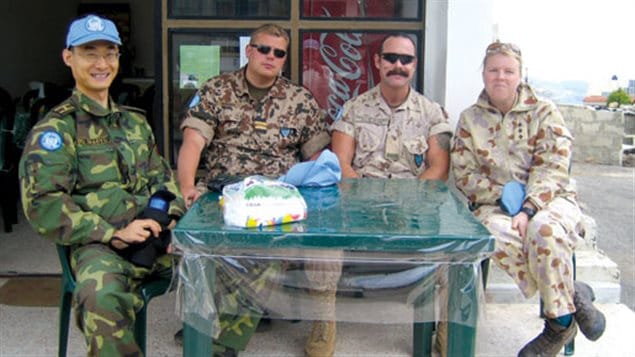
In another email to his wife, the Canadian Major would write that Israeli attack helicopters were hitting schools and hospitals, nothing to do with terrorists and were clearly committing war crimes under the Geneva Convention.
At noon, on July 25th, something very sinister had changed. A barrage of explosions were now coming extremely close to the clearly marked UN building. In the past, close calls and “firing in” were shells and bombs that missed their targets, Now however there were no targets left anywhere near the base. The peacekeepers hunkered in the underground shelter of the bunker began furiously radioing for help and to stop the attacks.
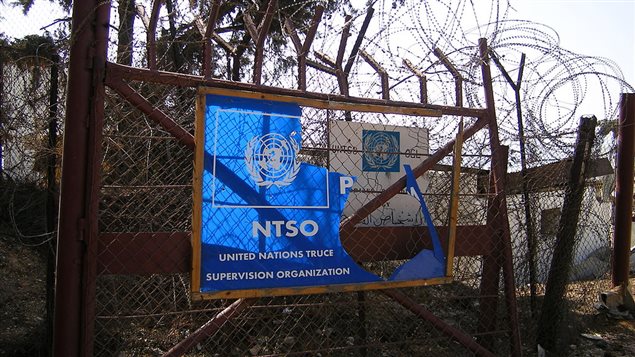
Two hours later another wave of attacks, and complaints reached the highest levels of the UN with the UN Deputy Secretary General calling Israel’s UN ambassador to stop the attack.
By suppertime, at 6;30 pm (18;30 hours), four huge artillery shells landed in the compound damaging much of the above ground building and blowing the solid door off the entrance to the underground bunker.
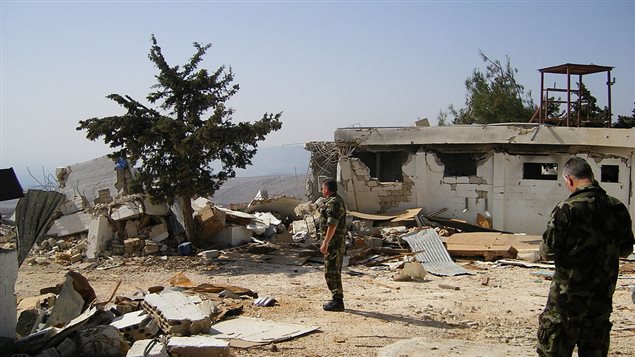
Now the military General in charge of UN operations in Lebanon was calling the Israeli liaison officer and shouting at him to stop the attack on the UN base which had been created in 1978, and whose precise position would be completely evident on all maps and also by GPS location. This was in addition to the clearly visible huge letters “UN” painted on the sides and top of the building, along with flags and antennae arrays..
A half hour later, an Israeli jet dropped its 500kg GPS-guided bomb right through the doorway of the underground bunker.
There were no survivors.
The bodies of Major Hans-Peter Lang, 44, from Styria, Austria, Major Du Zhaoyu, 34, of China, and Canada’s Major Paeta Hess-von Kruedener along with the two base dogs, were later found in the bombed-out rubble. Almost nothing was found of Lieutenant Senior Grade Jarno Mäkinen, 29 of Finland
Later the Israelis would claim the base was targetted due to operational error, it being erroneously labeled on their maps…a data-entry error.
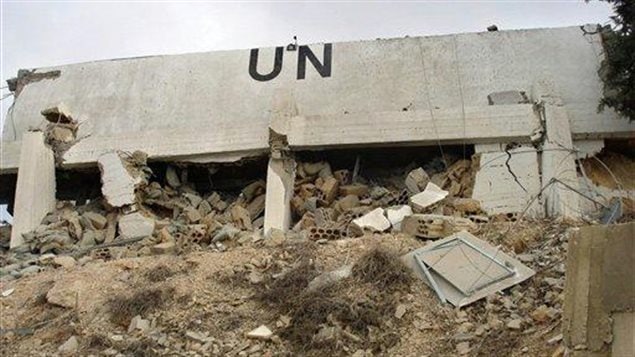
The attacks on the base lasted from noon to 7pm, during which several calls were made to various levels of Israel’s politicians and military, from political and military levels of the UN to the peacekeepers themselves, yet the attacks continued.
Some suggest the Israelis were tired of having their violations noted by the peacekeepers and simply removed the obstacle.
A later Canadian Board of Inquiry (BOI) noted that Israel acknowledged the calls, and that in the past when calls like this were made, the attacks were called off. No reason was found or has ever been given by the Israelis why this did not happen on July 25, 2006. The BOI also noted a reluctance by Israel to provide information and access to military personnel.
Major Paeta Hess-von Kruedener’s remains are buried in the Woodland Cemetery, Burlington Ontario.
with files from Adam Day, Legion Magazine
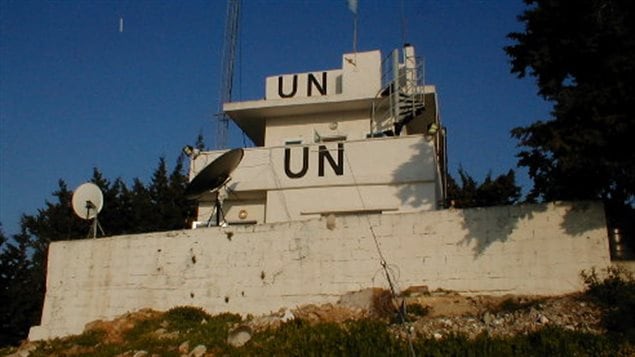






For reasons beyond our control, and for an undetermined period of time, our comment section is now closed. However, our social networks remain open to your contributions.